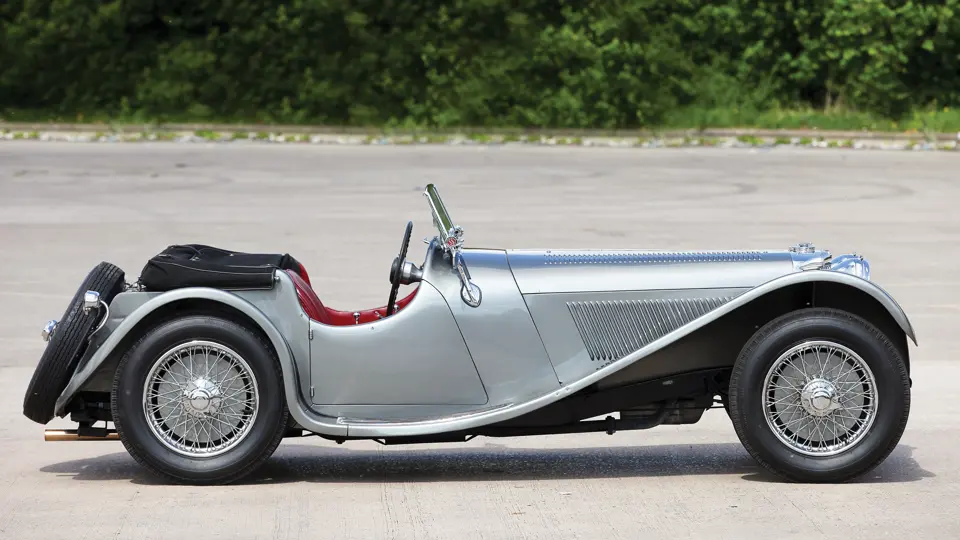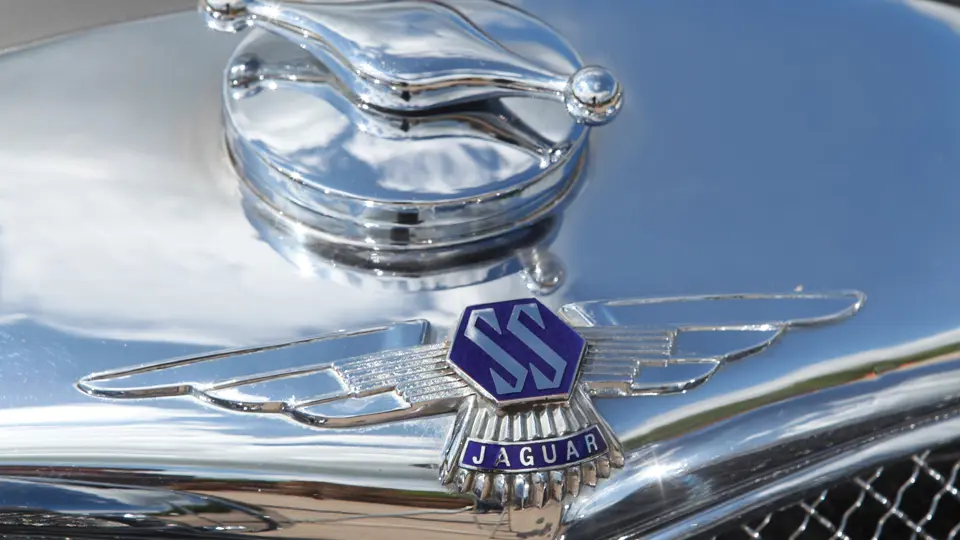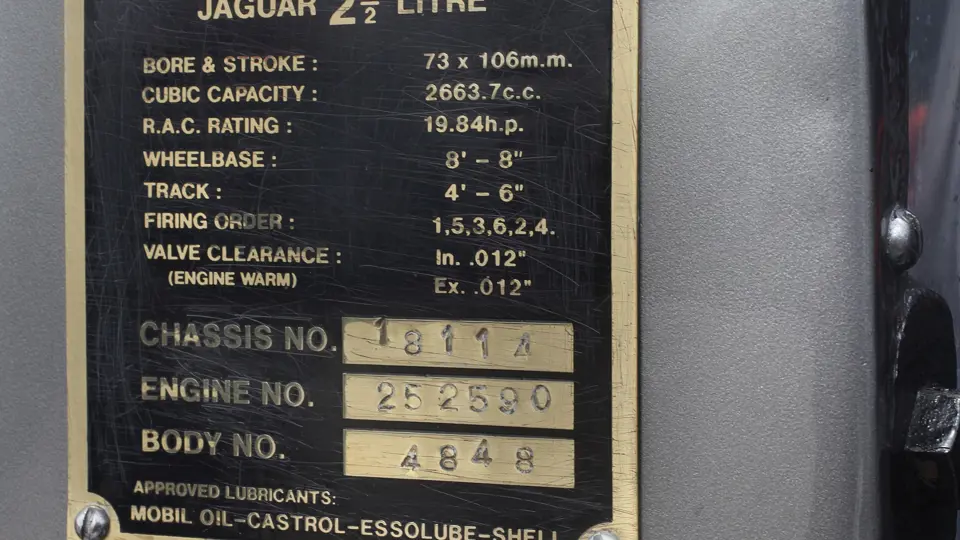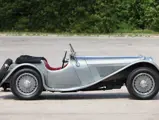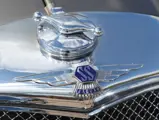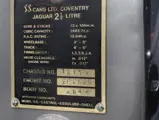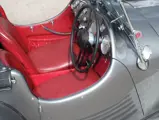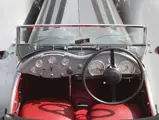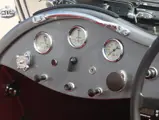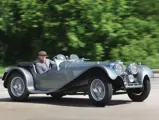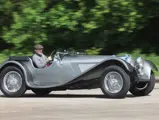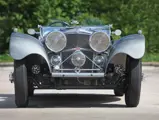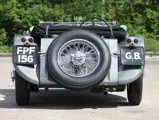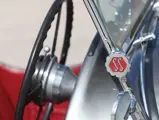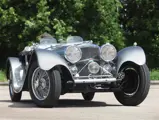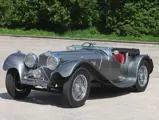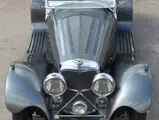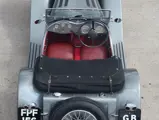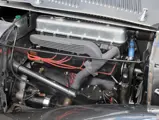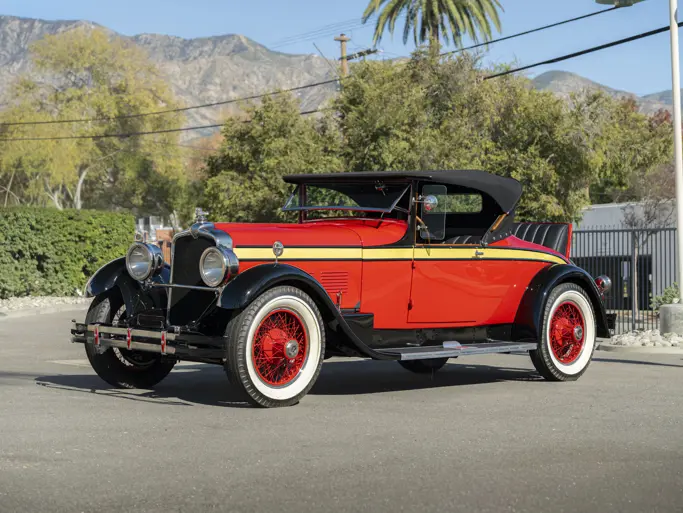
1937 SS 100 Jaguar 2½-Litre Roadster
{{lr.item.text}}
$484,000 USD | Sold
{{bidding.lot.reserveStatusFormatted}}
- Originally owned by motoring journalist Laurence E.W. Pomeroy
- Extensive, well-known Malaysian racing history
- Formerly owned by a president of the Japanese Jaguar Club
- Numerous concours appearances and a CCCA Senior award holder
102 bhp, 2,663 cc overhead-valve inline six-cylinder engine with dual SU carburetors, four-speed manual transmission, independent front and solid axle rear suspension with semi-elliptic leaf springs and friction shock absorbers, and four-wheel mechanical drum brakes. Wheelbase: 104 in.
The first true performance car from SS, the SS 100 “Jaguar,” breathed new life into the gorgeous design of its predecessor, the SS 90, as it had a revised radiator, new headlamps, and a sporty Le Mans-type fuel tank. Under the hood was markedly improved performance, as it featured a new 102-horsepower, overhead-valve, six-cylinder engine with a new cylinder head and dual SU carburetors. The model was named for the top speed that it could reach, 100 mph, and it quickly became popular with enthusiasts. That enthusiasm has never waned.
SS 100 marketing literature described it as having been “designed primarily for competition work…(but) equally suitable for ordinary road use, for despite the virility of its performance, it is sufficiently tractable for use as a fast touring car without modification.” Many owners took this to heart and used their cars both as primary transportation and in many forms of motorsport, including on hill climbs, rallies, and road races. As a result, an SS 100 was a common sight at such circuits as Donington Park and on RAC rallies.
The 2½-Litre Roadster offered here is documented by its original sales ledger, a copy of which accompanies the car, as having been sold by Layham’s Engineering Company, of Surrey, England, to Lawrence Evelyn Wood Pomeroy. Pomeroy was the son of the chief engineer of Vauxhall, who had designed the legendary “Prince Henry” model of 1913 and eventually built the first vehicle with aluminum-intensive construction. In 1936, the younger Pomeroy joined the prominent British motoring magazine The Motor, where he served as the technical editor for 22 years. He also authored the landmark history text The Grand Prix Car and coauthored Design and Behaviour of the Racing Car with Sir Stirling Moss.
In 1953, the car was acquired from Mercury Motors, of Wembley, by Harry Wolfe. Accompanying photographs on file are believed to date from Wolfe’s ownership, as one is marked in pencil as “Harrys SS100 Jag.” In 1958, the SS 100 then passed to Leslie Worley, of Sussex, who moved with the car to Malaysia. In his new home, Worley became an active vintage racer, eventually achieving the rank of president in the Malaysian Vintage Racing Club. His SS was driven in anger for two decades, and it was even pictured, being run by Worley at an MSCC sprint in Kuala Lumpur, in Terry McGrath’s The Forerunners of Jaguar, as well as in many Malaysian motoring publications of the era.
The Roadster returned to the United Kingdom in the 1970s and was restored while in the ownership of Richard Smith, during which it was finished in black. In this appearance, it was sold, sometime around 1984, to American enthusiast Norb Schaefer. While SS 100s have long been considered Classic Car Club of America Full Classics, few are regularly shown at the club’s events. Mr. Schaefer’s car was one of them, and it found time to earn its CCCA Senior award sometime between being raced at Elkhart Lake!
In 2002, the car was sold to a Japanese owner. It has remained overseas until recently, and following a change of color to the present Gunmetal, it was a regular concours entrant in Japan. The SS 100 Registry even pictures it taking part in the first Jaguar Day celebration near Tokyo in 2003, and in fact, its immediate previous owner was a president of the Jaguar & Daimler Owners Club of Japan.
The car remains in concours condition, with a well-preserved restoration in colors that have a wonderful, period-correct appearance, red leather upholstery, and a black soft top. Chrome wire wheels, a rear-mounted spare, and the combination of both a full windshield and Brooklands racing screens give it the look that is appropriate of a proper British sporting car.
An extensive history file, which includes photographs, accompanies the car, and prospective bidders are earnestly encouraged to study the fascinating contents of the file. This exciting SS 100 is a thrill to drive, just as it was on Malaysian roads half a century ago, and it is ready for a new owner to “see what she can do.”





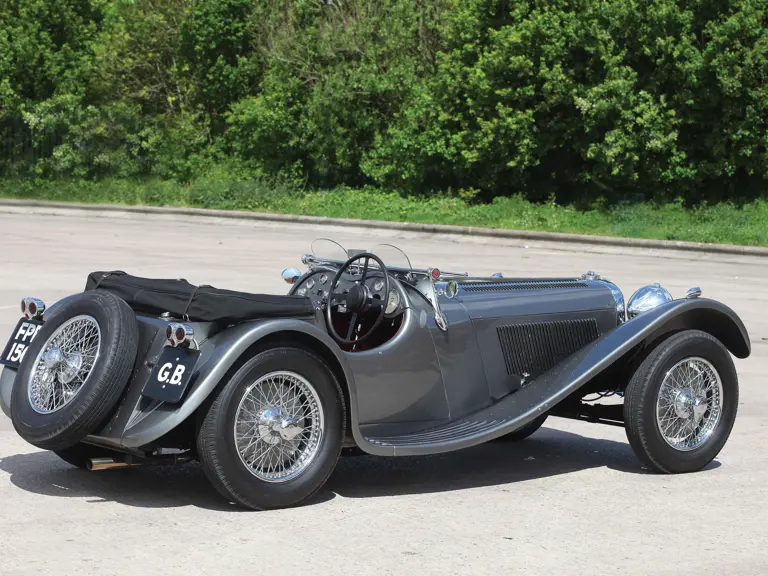

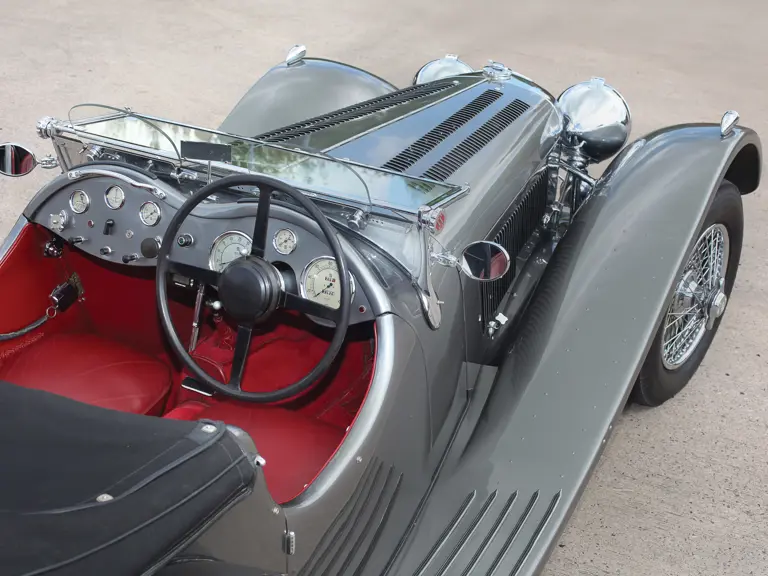
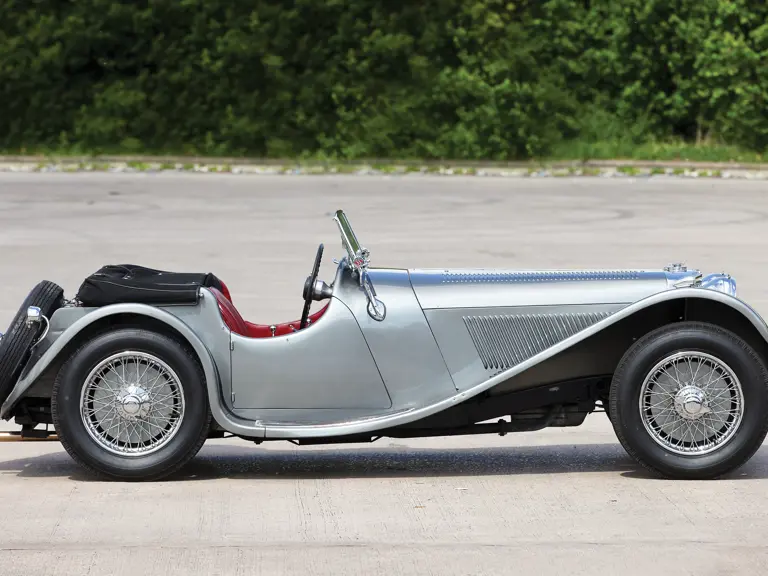
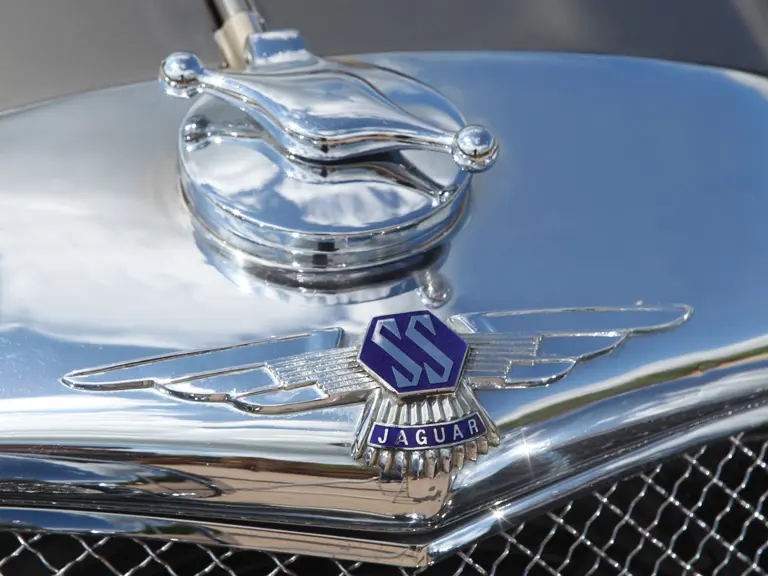






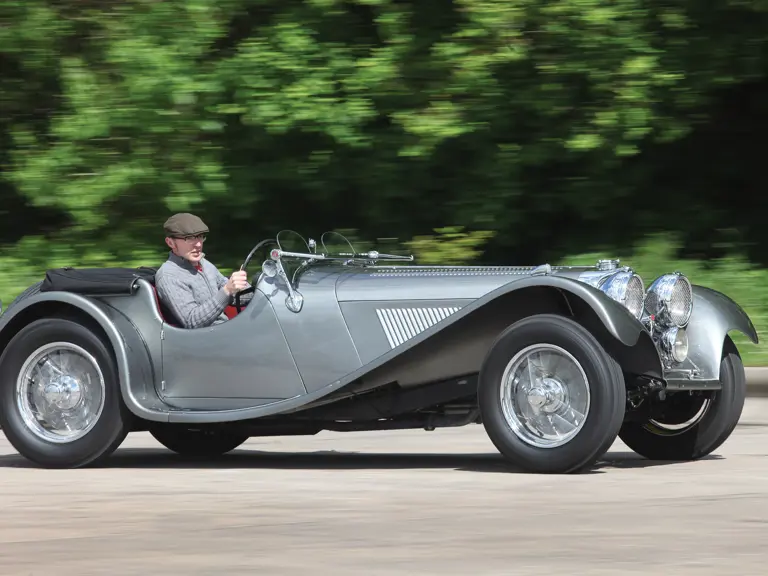


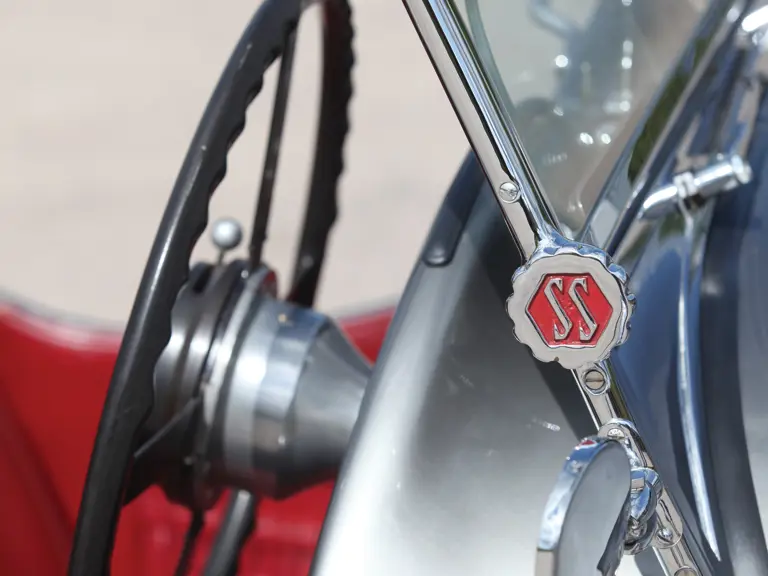
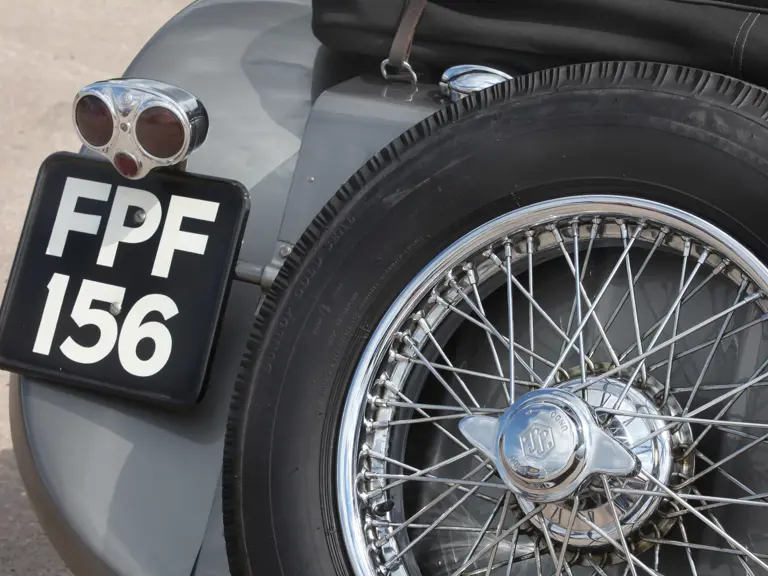
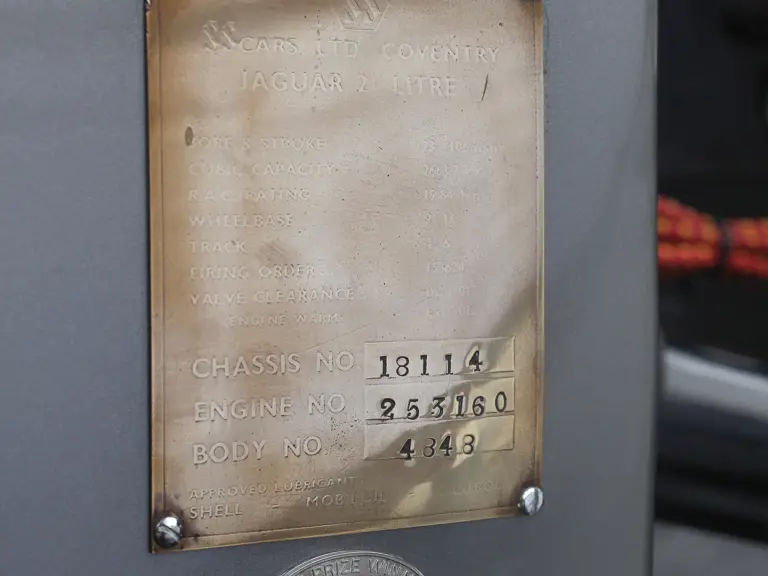
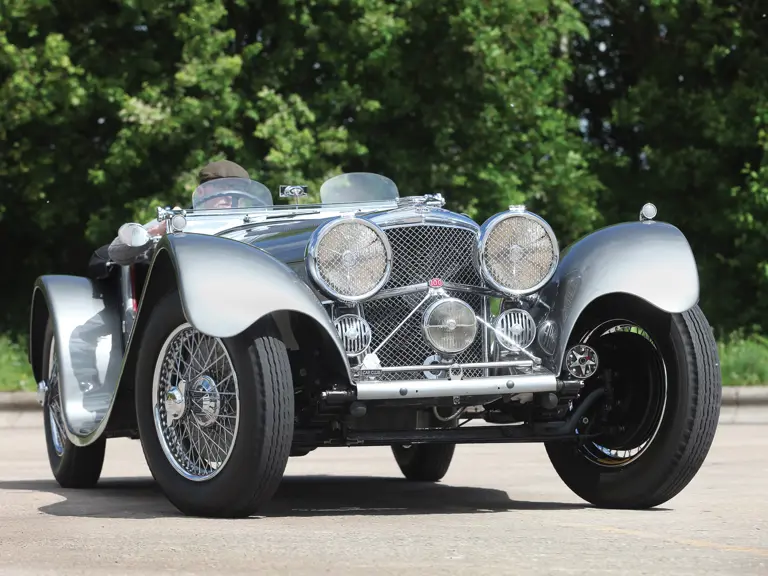
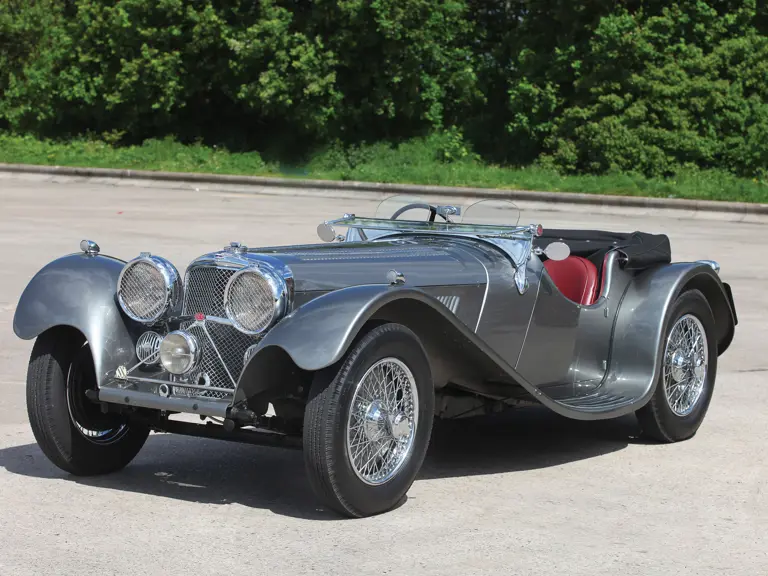
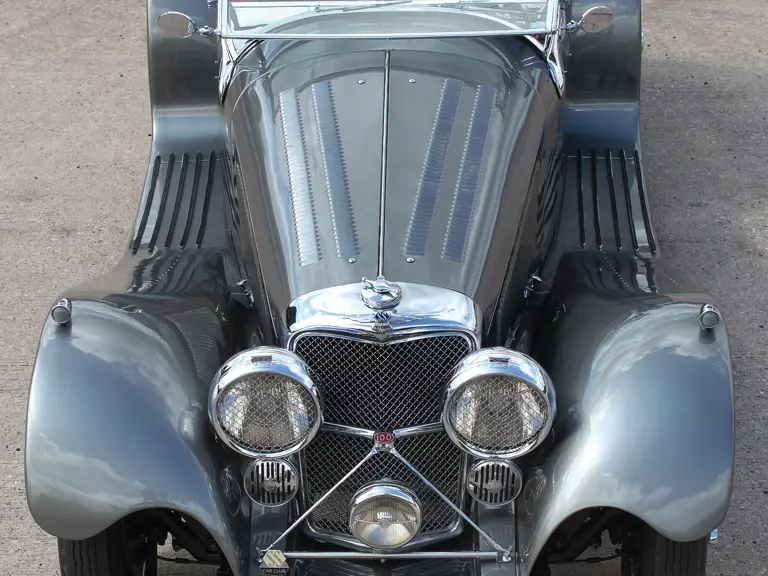

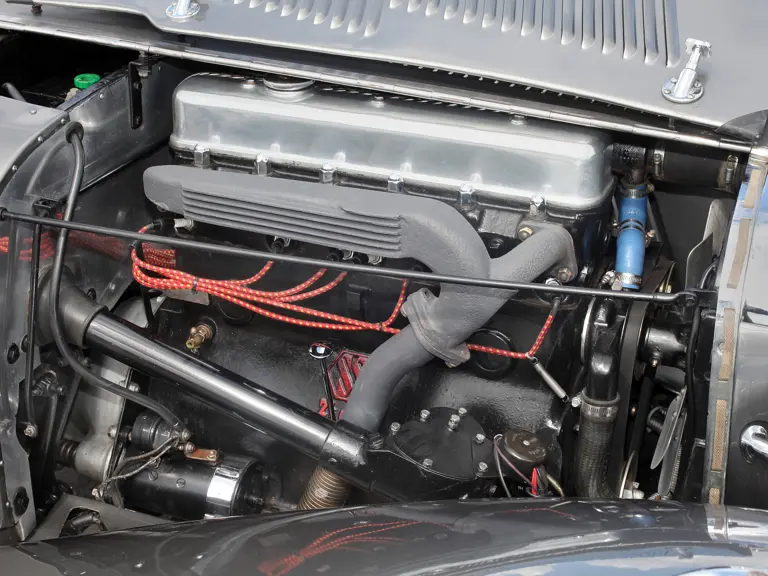
 | Monterey, California
| Monterey, California
